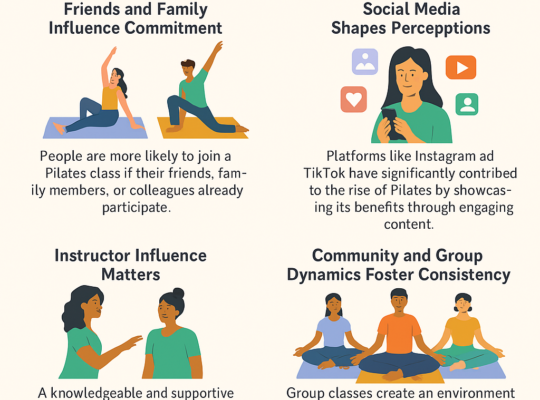In our fast-paced world, where sedentary behavior has become the norm, finding ways to break up long periods of sitting is crucial for maintaining our health and well-being.
A recent study, published by Journal of physical activity & health, delves into the fascinating realm of movement and its impact on glycemic control, concentration, and overall well-being. Let’s explore the findings and discover how incorporating short bouts of Yoga and Tai Chi into your daily routine can make a significant difference.
Understanding the Study
The study involved 15 healthy adults, aged around 26 years, with an almost equal distribution of males and females. Participants were divided into three groups: one group remained seated for 7.5 hours (the control group), while the other two groups interrupted their sitting time every 30 minutes with either 3 minutes of Yoga or 3 minutes of Tai Chi. Throughout the study, researchers monitored participants’ blood glucose levels, concentration levels, and well-being using various measurements.
Impact on Blood Glucose Levels
One of the most compelling findings was the significant reduction in blood glucose levels observed in the group that practiced Yoga. Compared to the control group, participants who engaged in short Yoga sessions experienced a notable decrease in blood glucose levels over the course of the study. This suggests that even brief periods of Yoga can positively influence glycemic control, offering a simple yet effective way to manage blood sugar levels.
While the Tai Chi group also showed a trend towards lower blood glucose levels, the difference was not statistically significant. However, Tai Chi did provide other benefits, as we’ll explore next.
Enhancing Concentration and Well-being
Maintaining focus and well-being throughout the day is essential for overall productivity and happiness. Interestingly, while all groups experienced a decline in concentration over the study period, the decrease was less pronounced in the Tai Chi group compared to the control group. Additionally, participants practicing Tai Chi reported an improvement in well-being, suggesting that this ancient practice has a positive impact on both mental and emotional health.
The Power of Physical Movement
This study highlights the profound impact that even short bursts of movement can have on our health and well-being. Whether it’s the gentle stretches of Yoga or the flowing movements of Tai Chi, incorporating these practices into our daily lives can help combat the negative effects of prolonged sitting. By breaking up sedentary behavior, we not only improve our blood glucose levels but also enhance our concentration and overall sense of well-being.
Incorporating Movement into Your Routine
Now that we understand the benefits, how can we incorporate these practices into our daily lives? It’s simpler than you might think. Setting aside just a few minutes every hour for some gentle Yoga stretches or Tai Chi movements can make a world of difference. Whether it’s during a work break, while watching TV, or even before bed, find moments throughout the day to move your body and reap the rewards of improved health and vitality.
Conclusion
In a world where sedentary behavior is pervasive, finding ways to infuse movement into our daily routines is paramount. The study’s findings underscore the transformative power of short bouts of Yoga and Tai Chi in improving blood glucose levels, concentration, and overall well-being. By embracing these ancient practices, we can unlock the full potential of our health and lead happier, more vibrant lives. So, let’s take a stand against sedentary behavior and start moving towards a healthier future, one stretch at a time.

